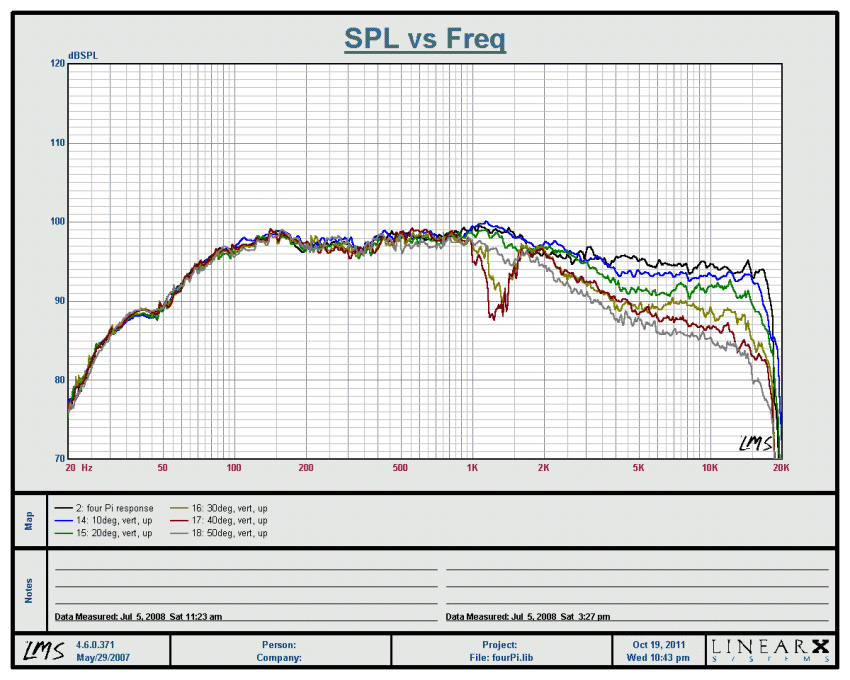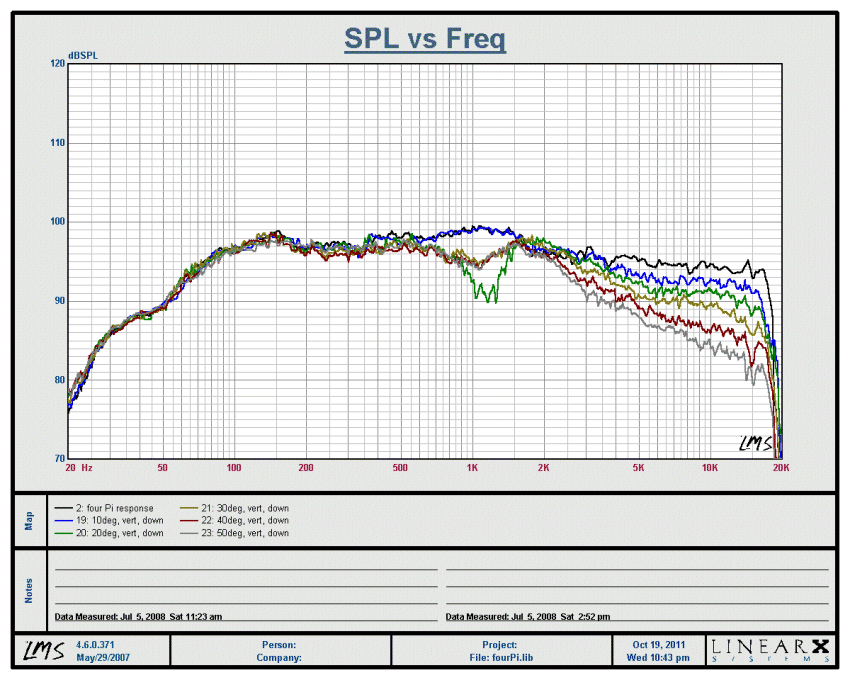

Posted by Wayne Parham [ 75.50.23.125 ] on July 09, 2008 at 19:42:49:
In Reply to: Re: I'm beginning to get that painful itch posted by Bill Epstein on July 09, 2008 at 15:22:09:
Whenever anyone asks about mounting horns on top, I usually remind them of the baffle spacing issue and how it relates to the null angles. It is best to keep the physical relationships between woofer and tweeter the same as designed, i.e. horn mouth flush with the baffle and distance between woofer and tweeter the same as shown in the plans. This ensures that everything will work properly and the nulls fall where they are supposed to.
This applies to cornerhorns as well as the DI-matched two-ways, because each has vertically stacked sound sources. The difference is one uses a direct radiating midwoofer, matching the horizontal coverage of the horn to the collapsing directivity of the midwoofer. The other uses a pair of horns with equal horizontal angles. In each case, the vertical angle is set both by horn radiation and null angle. It is desirable to have the null angle outside the horn's vertical pattern.
The π tweeter wood horn is a little taller than the H290, so it provides better vertical pattern control. The vertical beamwidth is less than 60° at 2kHz and gradually narrows to 40° by 8kHz. Polar charts are provided at the link.
The H290 is a little smaller, so it can't maintain vertical control much below about 4kHz. That means off-axis response outside the null angle will rise in the octave between 2kHz and 4kHz, and then fall back down as the horn gains pattern control. It is what I meant when I described a slightly undersized horn. It is a nice size though, and performance is good. Makes packaging convenient and attractive for the traditional DI-matched two-ways with the horn mounted in the box.
The tweeter in the four π has a slight horizontal offset, so the horizontal off-axis response curves are slightly different left than right. Not by much though. You can see in the charts below, the set of measurements on the left were done at angles that put the measurement microphone closer to the tweeter, resulting in a little less HF droop at large angles. But all in all, the curves are nice and smooth at all angles in both directions +/-50°.
 |  |
Measurements gathered for various angles in the horizontal plane as well as the vertical plane. They were done with the speaker standing upright, but angled slightly downward so that the forward axis pointed at the microphone. The forward axis was defined as a line perpendicular to the baffle starting from the midpoint of the baffle, centered from top to bottom and side to side. The microphone was placed on the ground ten feet away.
 |  |
You can see that the left chart doesn't falloff at HF as much as the chart on the right. That's because the left chart was done for vertical angles up from the forward axis, which puts the microphone closer to the tweeter. The 10 foot distance to the speaker's center was maintained, but the microphone moves up, so the tweeter becomes closer. Small angles, 10° and even 20° don't cause much HF drop, about 2dB each above 10kHz.
The right chart shows microphone movement downward, both increasing the vertical angle and the distance to the tweeter, so HF falloff is more pronounced.
Another thing that is interesting is the behavior at the null angles. Pay attention to the four curves: on-axis (black), 10° (blue), 20° (green) and 30° (olive). You can clearly see the valley produced by the off-axis nulls between 1.2kHz and 1.4kHz. Above the nulls, output increases to approximately 4kHz, where the horn gains pattern control and output falls back to about the same level as the valley formed by the nulls in the crossover region.
This is an indication that the H290 horn doesn't have good pattern control in the vertical plane until about 4kHz. It's just too small. A larger horn would have better vertical pattern control, so there would be less rise between 2kHz and 4kHz. But then again, the horn would have to be a lot taller to provide any real benefit, and that would increase driver spacing. The net result would bring the nulls closer together and adversely affect the shape and size of the forward lobe. All-in-all, it is probably not prudent to choose pattern control in the vertical over driver spacing.
A good balance is the best approach, which is why I tend to think this general size and form factor is the best compromise. Performance is of the H290 is very good and it is a nice size for the four π cabinet.
[ PiSpeakers Forum ] [ Help ]